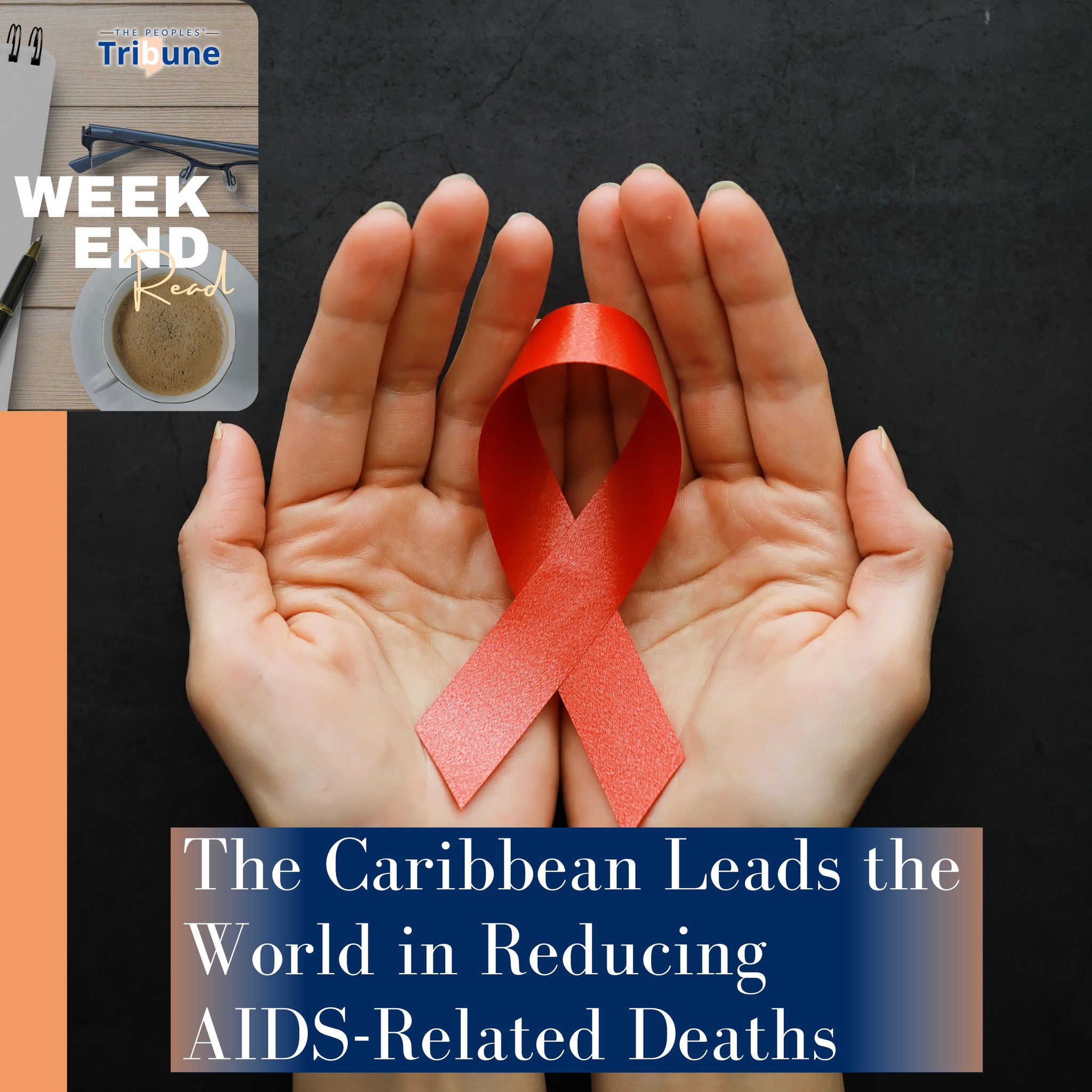In a region often defined by its resilience, the Caribbean has quietly achieved a global public health milestone. According to the newly released Global AIDS Update Report by UNAIDS, the Caribbean has recorded a 62 percent reduction in AIDS-related deaths between 2010 and 2024, the steepest decline of any of the eight regions studied around the world. This remarkable achievement outpaces the global average of 54 percent and reflects not just medical progress, but the power of collaboration, commitment, and community engagement in the face of long-standing challenges.
The report, titled AIDS, Crisis and the Power to Transform, places the Caribbean at the forefront of global progress, surpassing even regions like West and Central Africa, Eastern and Southern Africa, and Asia and the Pacific, all of which also recorded significant declines. Meanwhile, troublingly, AIDS-related deaths have increased by 48 percent in Eastern Europe and Central Asia, underscoring the uneven progress across the globe.
In the Caribbean, UNAIDS credits this success to a combination of strong political leadership, resilient communities, and the support of major partners such as PEPFAR and The Global Fund. Dr. Richard Amenyah, Director of the UNAIDS Multi-Country Office in the Caribbean, noted that the achievement is especially meaningful given the region’s unique vulnerabilities, including high public debt, exposure to natural disasters, and a decline in international financial support. “It shows the resilience of a region constrained by a myriad of social, economic and other challenges,” he said, emphasizing the critical role of inclusive leadership and collaboration across governments, healthcare providers, and people living with HIV.
Fifteen years ago, the picture was starkly different. In 2010, just 53,000 people living with HIV in the Caribbean had access to treatment, and the region recorded 13,000 AIDS-related deaths. Today, treatment coverage has expanded nearly fivefold, reaching 250,000 people by 2024, including 50,000 added in just the past four years. UNAIDS reports that 85 percent of people living with HIV in the Caribbean now know their status, 74 percent are on treatment, and 66 percent have achieved viral suppression, compared to just 33 percent in 2017. AIDS-related deaths have fallen to 4,800 in 2024, down from 6,100 in 2020, a testament to improved access to care and the effectiveness of sustained public health strategies.
But the news is not entirely celebratory. While deaths are down, the rate of new infections remains a concern. Globally, new HIV infections have decreased by 40 percent since 2010, yet the Caribbean has seen only a 21 percent reduction. In 2024, there were still 15,000 new infections recorded across the region. Four countries—Haiti, the Dominican Republic, Cuba, and Jamaica—account for the overwhelming majority, with Haiti alone contributing 38 percent. Perhaps most alarming is the age demographic driving these numbers, as young people aged 15 to 24 make up one-quarter of all new infections. This suggests that prevention strategies have yet to fully reach or resonate with the younger generation.
The report urges a shift in strategy to sustain and build on the gains made. It emphasizes the need to better integrate HIV services into broader health systems, deepen partnerships with civil society organizations, and take stronger action against social factors such as stigma, discrimination, and misinformation. These issues often remain invisible, yet they are powerful barriers to testing, treatment adherence, and public trust.
Financial sustainability is also critical. With international funding for HIV responses becoming less predictable, Caribbean nations are being urged to increase their investment and ownership of HIV programmes. Encouragingly, domestic funding rose from 30 percent in 2023 to 38 percent in 2024, but UNAIDS says this is not enough. Governments are being called on to further prioritize HIV within their national health budgets and to innovate in ways that maintain treatment access and expand outreach, especially to young people and vulnerable populations.
Dr. Amenyah concluded with a call to action rooted in shared responsibility and long-term vision. “Governments must continue to prioritize increasing domestic resources, integrate HIV into broader health systems, innovate to keep people living with HIV on treatment toward achieving viral suppression, and ensure equitable access for young people and key populations to prevent new infections,” he said. “Only through sustained partnership and greater country ownership can we end AIDS as a public health threat by 2030 in the region.”
For the Caribbean, the report is both a celebration and a challenge. It recognizes the region’s leadership in saving lives and reducing suffering, while urging that the same commitment now be directed toward prevention. The fight against AIDS is not yet over, but the Caribbean has shown the world what is possible when health equity, political will, and community action align.
Join Our Community Today
Subscribe to our mailing list to be the first to receive
breaking news, updates, and more.






%20(412%20x%20570%20px)%20(412%20x%20340%20px).jpg)